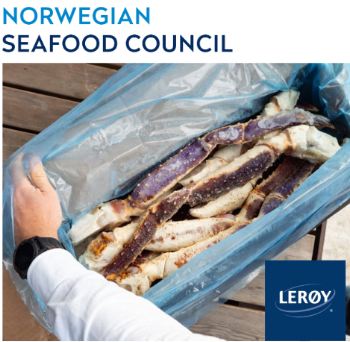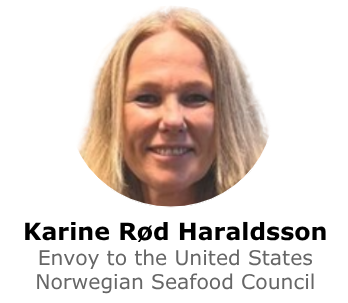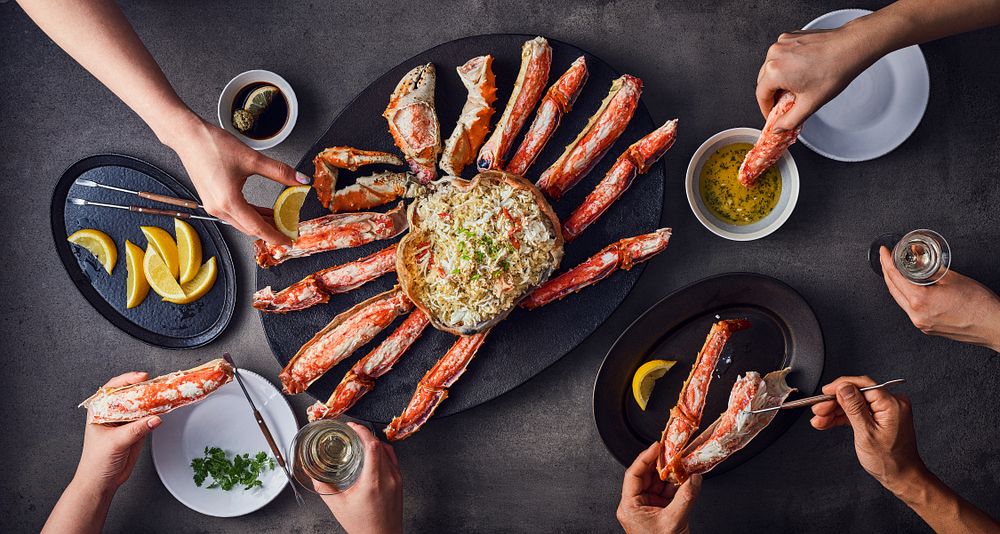|

Lerøy's Norwegian Red King Crab is available both live and frozen, upon customer request. Photo: Lerøy/FIS
New Report Unlocks Opportunities for Norwegian Snow and King Crab in the U.S. Market
 UNITED STATES
UNITED STATES
Thursday, July 03, 2025, 07:00 (GMT + 9)
Fresh insights aim to strengthen Norway's premium position amid rising demand and unique market advantages.
OSLO – Norway's seafood industry is strategically positioning itself globally, with significant opportunities emerging for its snow crab and king crab, particularly within the lucrative U.S. market. A newly released report now offers crucial insights into key areas for future development, aiming to bolster Norway's already strong foothold.
 "The opportunities are vast, and we recognize that precise and strategic measures will be required to ensure the continued competitiveness of king crab and snow crab moving forward," stated Karine Rød Haraldsson, Norway's Seafood Envoy to the U.S. "We hope this new insight can help strengthen the long-term strategy for Norwegian shellfish in the USA." "The opportunities are vast, and we recognize that precise and strategic measures will be required to ensure the continued competitiveness of king crab and snow crab moving forward," stated Karine Rød Haraldsson, Norway's Seafood Envoy to the U.S. "We hope this new insight can help strengthen the long-term strategy for Norwegian shellfish in the USA."
The report highlights a continued need for investment in branding within the market, emphasizing the potential to underscore the superior quality and sustainability of Norwegian products. These efforts, according to Haraldsson, are vital for maintaining and expanding Norway's strong position.
Early Season Advantage for Norwegian Snow Crab
The U.S. currently represents the largest and most profitable market for Norwegian snow crab. In 2024, exports saw remarkable growth, with a 12% increase in volume and a substantial 44% surge in value.
A key competitive advantage for Norwegian snow crab is its ability to enter the U.S. market before the peak of the Canadian season. "While Canadian snow crab dominates the U.S. market from April to June, Norway has the opportunity to offer snow crab from the first and second quarters," Haraldsson explained. "Therefore, we see that early market outreach with marketing, pre-agreements, campaigns, and collaborative initiatives can be valuable in leveraging this advantage."

Norwegian king crab is sought after in the United States, and restaurants in the "luxury segment" and specialized distributors are particularly interested in live and frozen king crab.
Navigating U.S. Tariffs and Fostering Collaboration
Despite the significant potential, Norwegian shellfish exports face a challenge from the current 10% U.S. tariff. Canada, being exempt under the USMCA agreement, benefits from a cost advantage that Norway does not.
To gain a better market advantage, Haraldsson suggests that joint strategies between Norwegian exporters and U.S. importers will become increasingly important. She also recommends continued strengthening of origin labeling, reinforcing the perception of Norwegian shellfish products as "premium," and highlighting the sustainable profile of Norwegian seafood. "Joint strategies and cooperation can help maintain competitive prices and protect market shares," she added.
Canadian companies have emerged as crucial partners for importing Norwegian snow crab into the U.S., accounting for almost half of the total imports. Their knowledge and networks are considered vital for the Norwegian shellfish industry, and further cooperation, especially during periods of limited Canadian supply, could yield long-term benefits.
Strong Demand for Norwegian King Crab
Josefine Voraa, Shellfish Analyst at the Norwegian Seafood Council, also sees significant growth opportunities for Norwegian king crab in the U.S. market, believing its potential has yet to be fully realized. In 2024, Norway exported 528 tonnes of live and frozen red king crab to the U.S., representing 69% of Norway's total king crab exports.
.png) "The U.S. accounts for a large portion of total exports, but king crab still has great potential for further growth," Voraa stated. "Restaurants within what we can call the 'luxury segment' and specialized distributors are particularly interested in live and frozen king crab." Continued efforts in distribution and promotion can further increase demand. "The U.S. accounts for a large portion of total exports, but king crab still has great potential for further growth," Voraa stated. "Restaurants within what we can call the 'luxury segment' and specialized distributors are particularly interested in live and frozen king crab." Continued efforts in distribution and promotion can further increase demand.
The absence of Russian king crab and restrictions on Alaska's red king crab in the U.S. market have given Norwegian red king crab a unique advantage, leading to historically high prices coupled with strong demand. Voraa advises that to capitalize on this potential, stakeholders must make strategic choices between live and processed segments while optimizing resources.
Quality and Sustainability: Key Competitive Advantages
Norwegian seafood already enjoys a positive reputation in the U.S. market, known for high production quality and a strong sustainability profile. It remains crucial to emphasize product traceability and relevant eco-labels and certifications in marketing and communication, particularly for "premium" segment players in retail and foodservice who seek these attributes.
Seafood Envoy Karine Rød Haraldsson remains optimistic about the report's findings, which can help chart the future direction for Norwegian shellfish in the U.S. "The Norwegian shellfish industry has an unparalleled opportunity to leverage its strong position in the American market. We believe that the combination of strategic partnerships, early season advantages, and a targeted focus on quality and sustainability will be decisive," she concluded. "With the right approach, this industry can not only maintain but expand its global influence in the years to come."
For those interested in delving deeper, the new report on shellfish in the American market is available
here
(login required).
[email protected]
www.seafood.media
|



